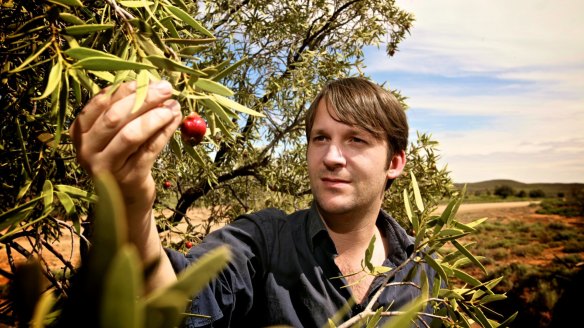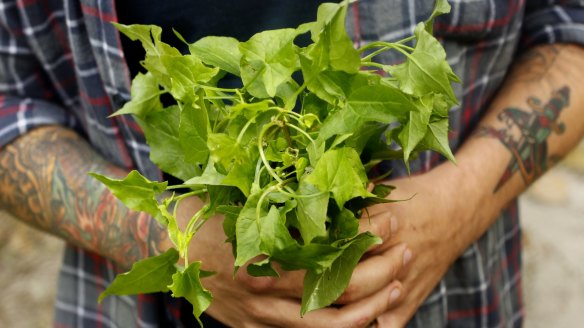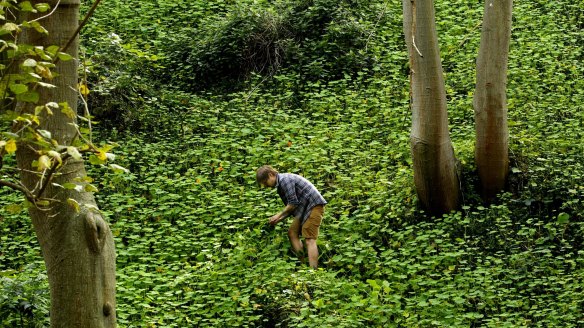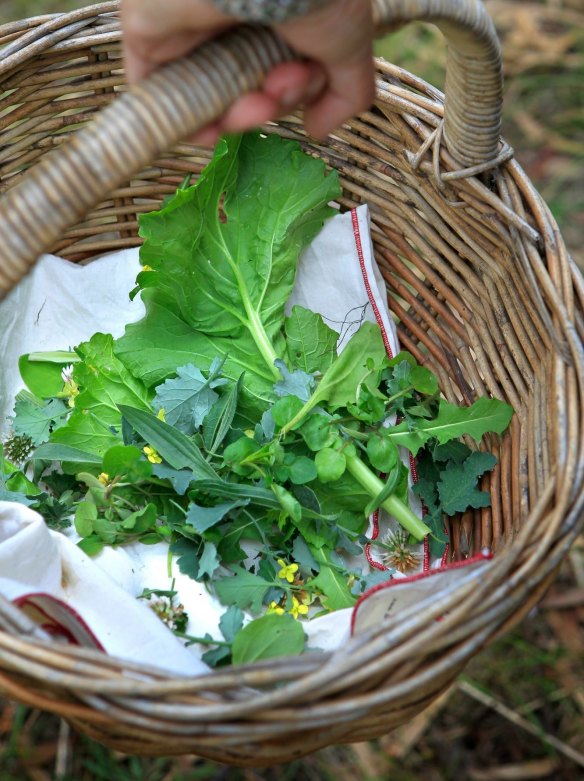Noma chef Rene Redzepi wants to help you forage with his new Vild Mad food app

"The basic premise is simple: Everyone in the world should grow up as a forager," said Rene Redzepi, founder of Noma and possibly the world's most influential chef. "Knowing your ABCs in nature, the flora and fauna, the patterns of the landscape and the rhythm of the seasons is as important as learning how to read and write."
Recently, at the World's 50 Best Restaurants' 15th anniversary event in Barcelona, Redzepi announced the launch of an international program that aims to connect people to nature and the landscape. The centrepiece of Vild Mad (Wild Food) is a free mobile app that explains how to read a landscape and unlock its culinary potential. "If they see how much we depend upon it, and if they grow up loving it," he said at the event, "then they will fight to take care of it."

Redzepi's reputation was forged in Copenhagen, where Noma employed professional foragers to fill the restaurant's larder. Despite Denmark's limited bounty compared to more southerly regions, foraging and preserving are foundations of Nordic culture. Noma established the culinary importance of wild food not just for survival, but for flavour and the experiential thrill of discovery. "The surprises we've had," said Redzepi, include "plucking grass from rotten seaweed to find it tastes like coriander, harvesting pineapple weed from cracks in the sidewalks, or biting into an ant to find it tastes just like lemon."
After figuring it out it in chilly Scandinavia, Redzepi began imagining what's possible in temperate areas. In April, Redzepi opened a Noma pop-up in Tulum, Mexico, and designed the menu around what could be harvested locally.
Langdon Cook, a Seattle forager and author, says the surprise-and-reward aspect touted by Redzepi is one reason foraging is trending. "It's the treasure hunt, which is incredibly primal," he said. "People are rediscovering these ancestral motivations that they didn't even know they had. Look at Pokemon Go. That's a kind of treasure hunt, too."

Foraging requires time, patience, curiosity and keen use of the senses. The vast majority of work has traditionally been for botanical or medicinal purposes, but Vild Mad and other contemporary foragers look to the ground as a grocer. At home, wild food encourages children to try things they wouldn't otherwise eat. Bitter greens and herbs, for instance, can be exciting when kids collect them themselves. More than identification, the app incorporates education, reflections and explanations by Redzepi himself. Via text, video and audio files, users are outfitted with a digital tool bag.
"The old-fashioned charms of the outdoors are competing with the newfangled baubles of tech," said Cook. "Kids are so comfortable with devices that the ability to marry it with analogue tech – your two feet – and propel you out the door and into the wild is a nice conflation of old and new."
Available in English and Danish, the app and website house an encyclopedia of foraging and culinary information on 105 wild plants found in the Nordic region and guide users through the landscape to identify, harvest and cook with wild plants. "How might the world look different, if we all were foragers?" Redzepi asked in a phone interview from Copenhagen. "We hope that our program can be an inspiration for others to do the same in different countries and cultures."

For the initial launch, the app and encyclopedia were primarily populated with Nordic-centric data, but updates will include flora from around the globe. The intel on landscapes and ecosystems are universal, however, making the app instantly useful wherever you find yourself.
"It puts species into context," said Cook, "so that you can see ecological companionship firsthand. If you want to know your chanterelles, for example, you need to learn your trees. This app helps users make those larger linkages."
The primary tool, designated with a compass icon, starts with recognising ecosystems: waterways, open land, forests, cities and towns. Within each, subcategories (such as salt marshes, lakes, beaches) are defined and explained according to terroir and seasonality. The app doesn't merely identify this leaf or that berry you've stumbled upon, but aims to help users become landscape-literate enough to know where to look.
There's also an ingredients list. Searchable alphabetically or seasonally, it's broken down into nature (where, when, how to find it), sensory (on the palate, aroma) and kitchen (preparation, uses, storage, substitutions). And there are recipes. Later this summer, Vild Mad will update the app with more recipes from 80 influential chefs including Daniel Humm, Magnus Nilsson and Redzepi.
"Not complicated, fancy food," said Mad project manager Mikkel Westergaard, "but dishes that a non-chef would cook with a 10-year-old." And the app allows you to photograph, geotag and note what you've found. "Here," he added in a phone interview, "you know to forage for only as much as you can fit into a hat. It's not just tradition, it's the law." The app draws from Danish statutes to spell out international foraging rules and etiquette so that neophytes learn, for instance, not to decimate the plants and to leave enough for others.
The app is funded by a Danish foundation that invested $US1.25 million ($1.64 million) and was developed by Mad, Redzepi's nonprofit organisation, which started in 2011 to produce an eponymous international food symposium. The curriculum has been developed for Danish schoolteachers to incorporate wild food into their class plans – independently or with Vild Mad rangers. And word is already spreading like wild bittercress. More than 11,000 people reacted to the announcement via Facebook in the first few hours, and 1,000 downloaded the app before it was officially announced.
"We've trained 50 rangers from corner to corner of Denmark," said Redzepi. "The rangers offer workshops on how to identify what is edible, how to take care of nature while foraging, and how to cook with what you find."
"It is an amazing feeling to distill 14 years of knowledge and energy into something that is open to the public," said Redzepi. "We simply can't wait to share all of this."
The Washington Post
- More:
- Food